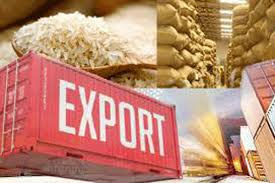Observer Report
Islamabad
Pakistani rice exports to Saudi Arabia showed 35.4 percent increase during the current fiscal due to the boosted demand, as the two countries moved ahead ensuring quality standards, a trade officials said.
“Our exports to the Kingdom have increased by 35.4 percent this year by June 9, as compared to last year”, said Azhar Ali Dahar, trade and investment chief at the Pakistani embassy in Riyadh, “We could have reached the US $ 500 mln mark under normal circumstances,” he said in an interview with Arab News.
Pakistan recorded its export volume with Saudi Arabia at US $ 417 million during the fiscal period from July 2019 to June 2020 as compared to the US $ 308 million for the year before, according to official data.
The Pakistani officials said Saudi appetite for Pakistani rice played a vital role in the country’s increased export quotient to the Kingdom — constituting 57 percent by value and 45 percent in terms of quantity.
“The export of rice increased from US $ 68.5 million to US $ 107.4 million. The demand for the rice was mainly due to the focus of Saudi authorities on the quality standards as Indian rice contains carcinogenic substance due to heavy use of pesticides,” Dahar said, adding that “continued exports from Pakistan during lockdown and emphasis on quality played
a key role.”
India has been a major rice exporter to the Middle East and Europe but due to the presence of high level of tricyclazole pesticide in its agricultural produce, the EU banned import of rice from India in January 2018 after lowering the maximum residue limit (MRL) level for tricyclazole fungicide to no more than 0.01 mg per kilogram.
“Saudi authorities have begun imposing the regulations to match quality standards with that of European Union. If Saudi Arabia implements the standard, Pakistani rice exporters would standout as major beneficiaries,” said Muhammad Raza, Senior Vice chairman of Rice Exporters Association of Pakistan (REAP), adding, “Our exports to EU have also doubled”.
Pakistan is among the top 10 rice producing countries in the world. The production of rice is expected to remain stagnant at 7.2 million tons in the current fiscal year FY20, according to State Bank of Pakistan.
However, exporters say that the country has more than 3.3 million tones of exportable surplus and there is not shortage of grain in the country.
Officials view the next year to be challenging for Pakistan in terms of food exports given the current crises engulfing the South Asian nation, although efforts are underway to diversity the export basket. APP
Dahar said, “The COVID-19 and Locusts invasions have posed food security threat as the country itself would need to ensure availability of food stocks.”










